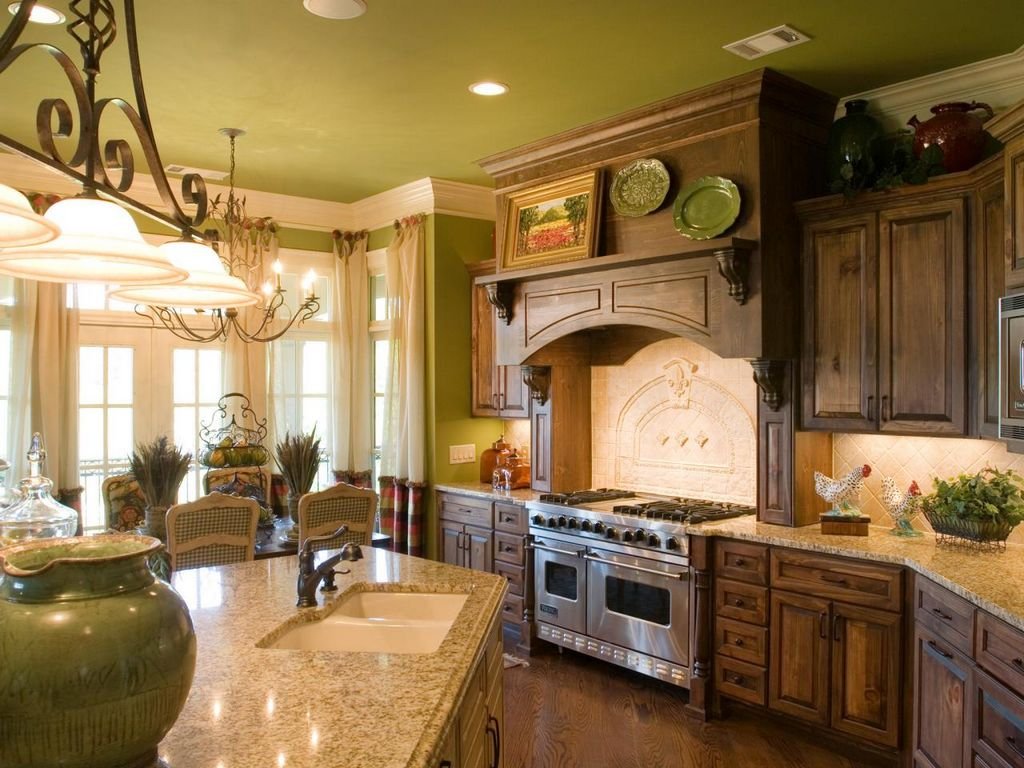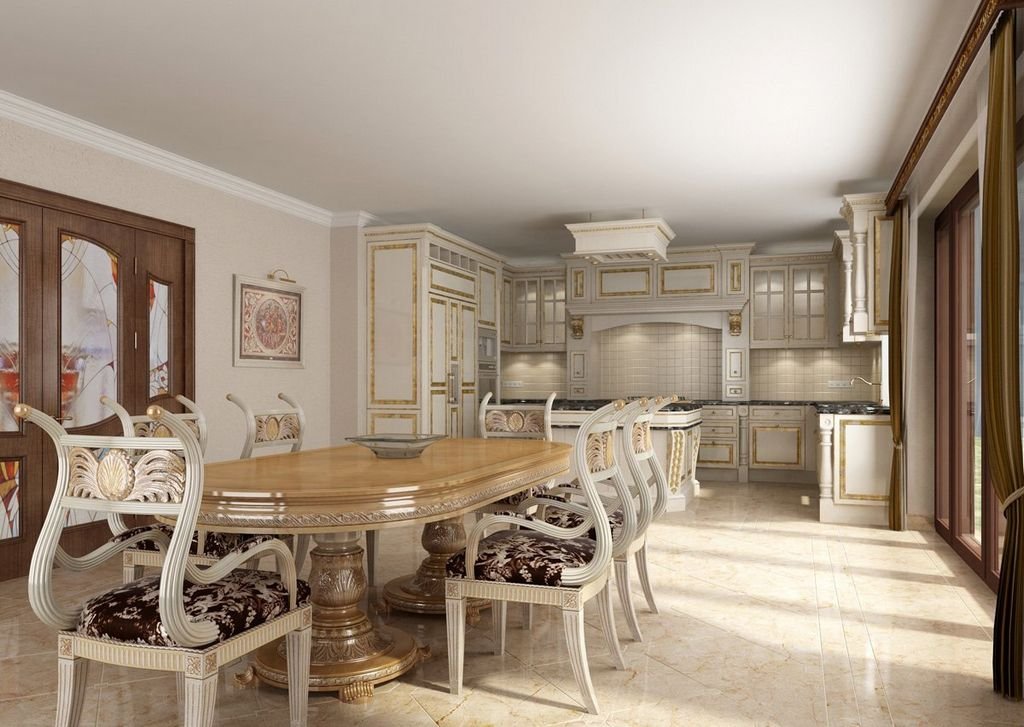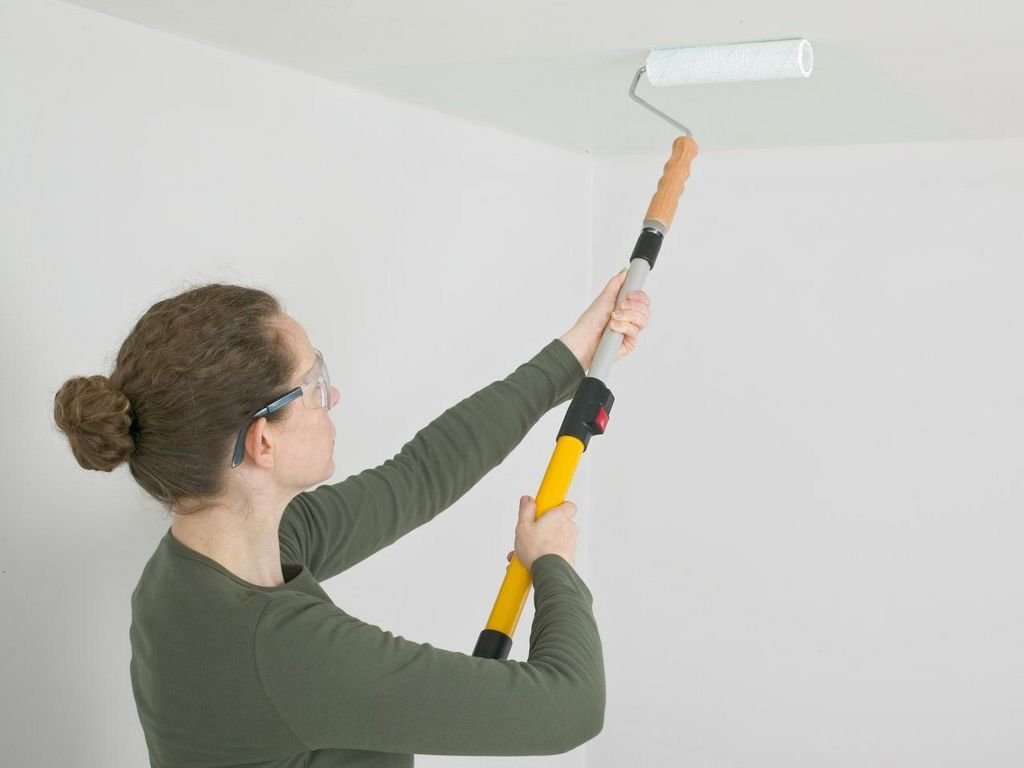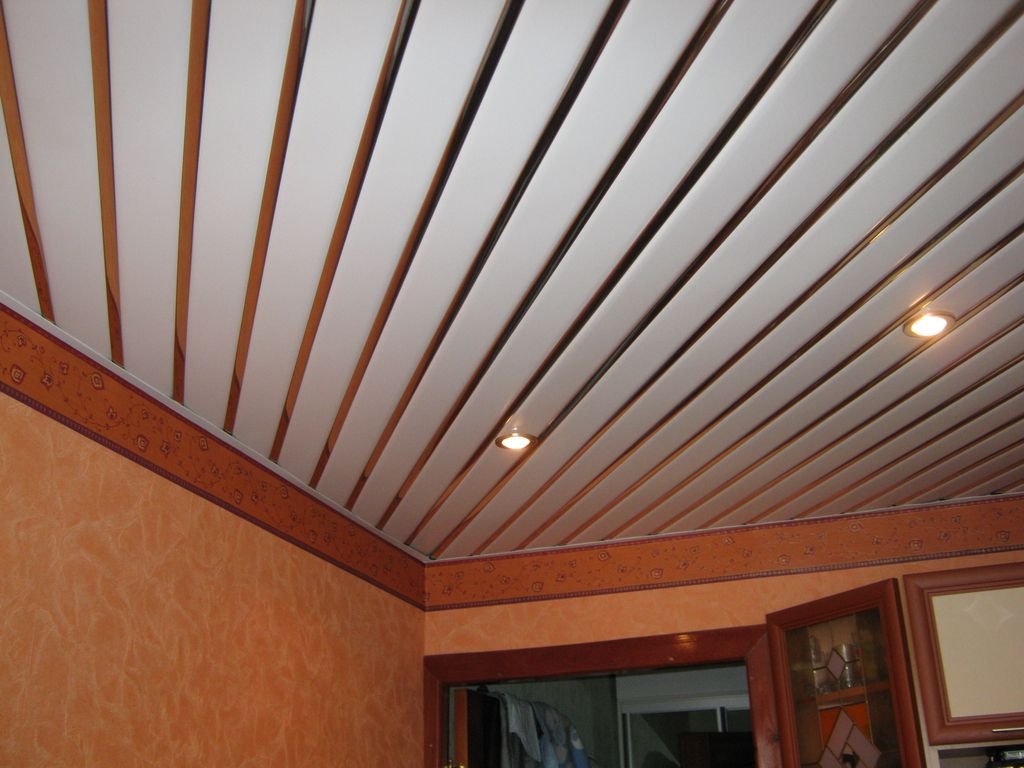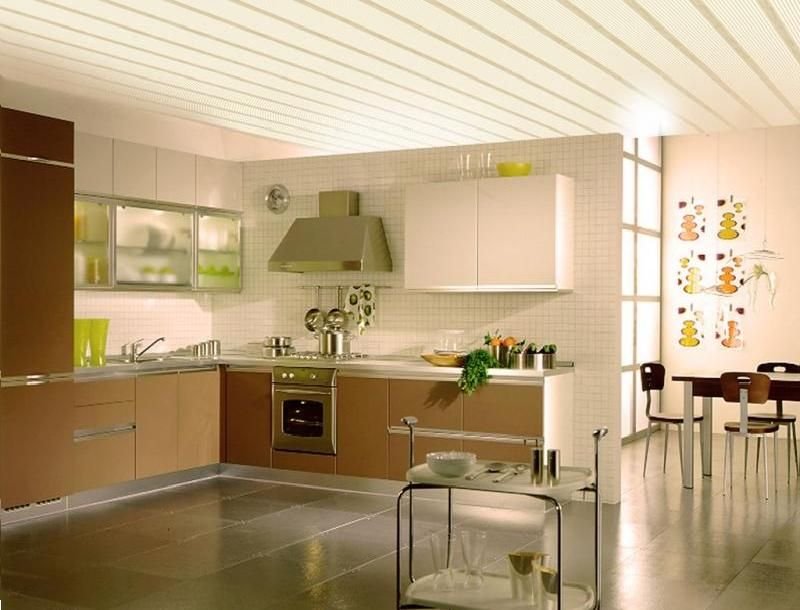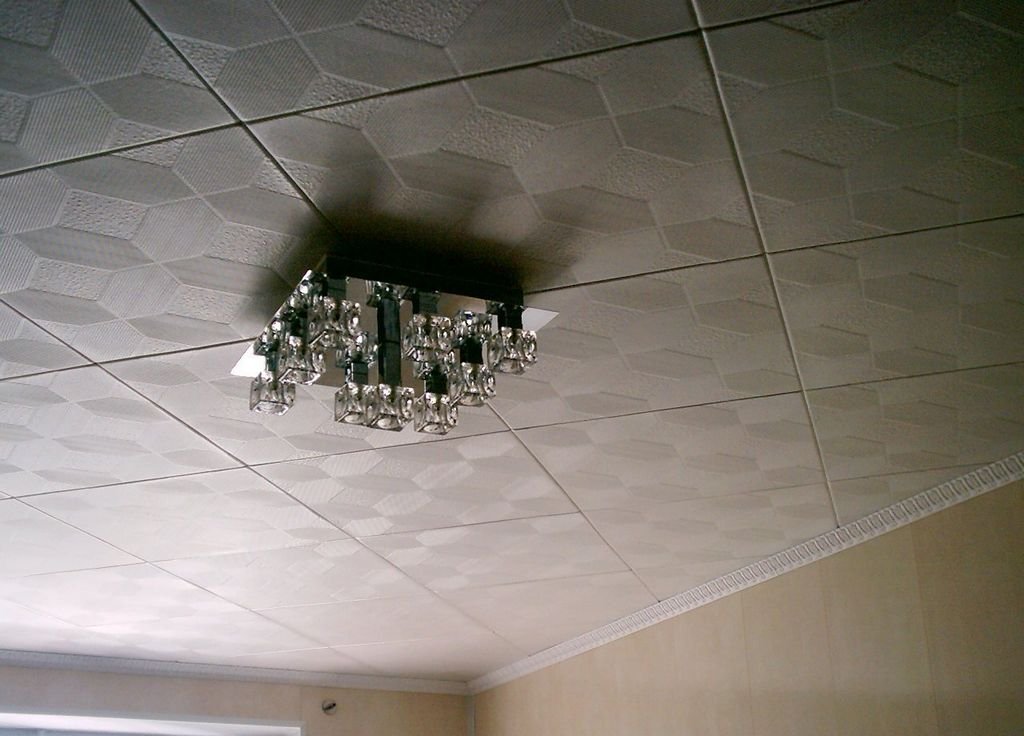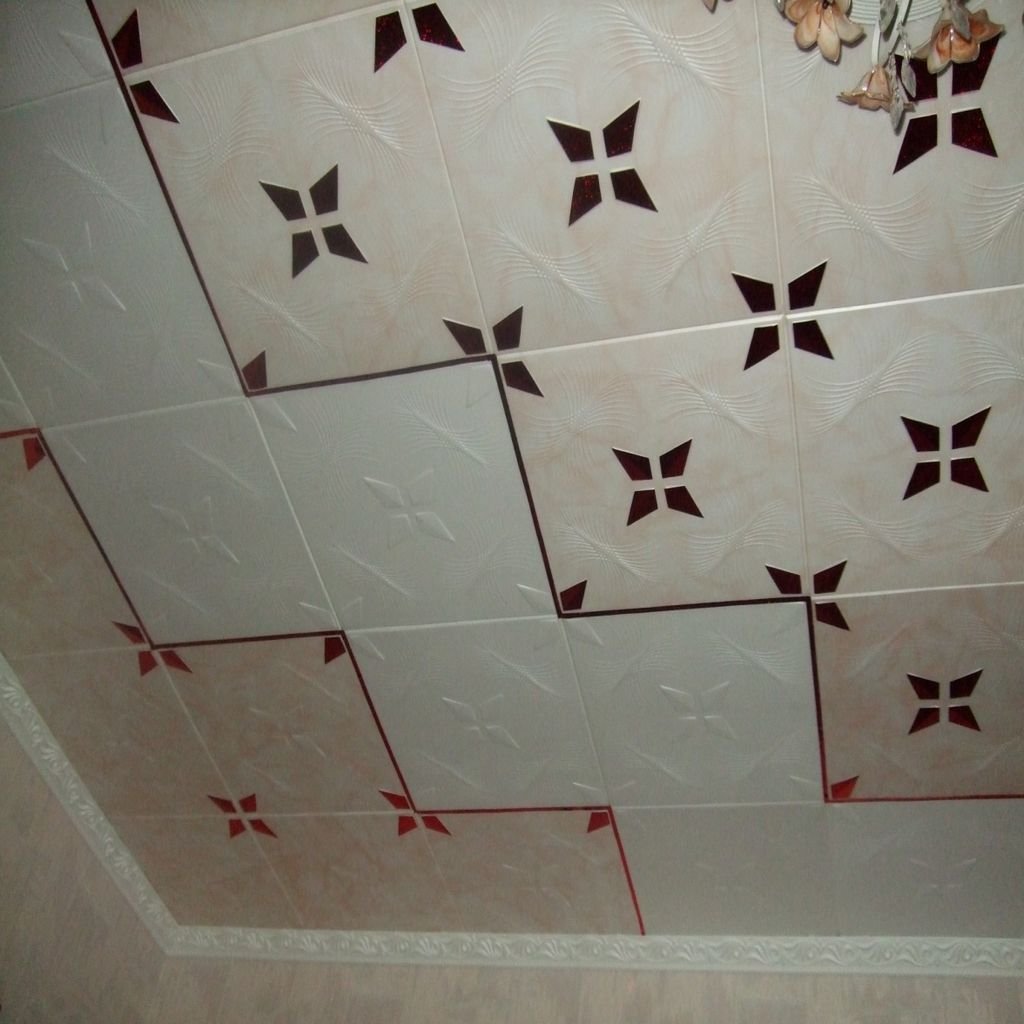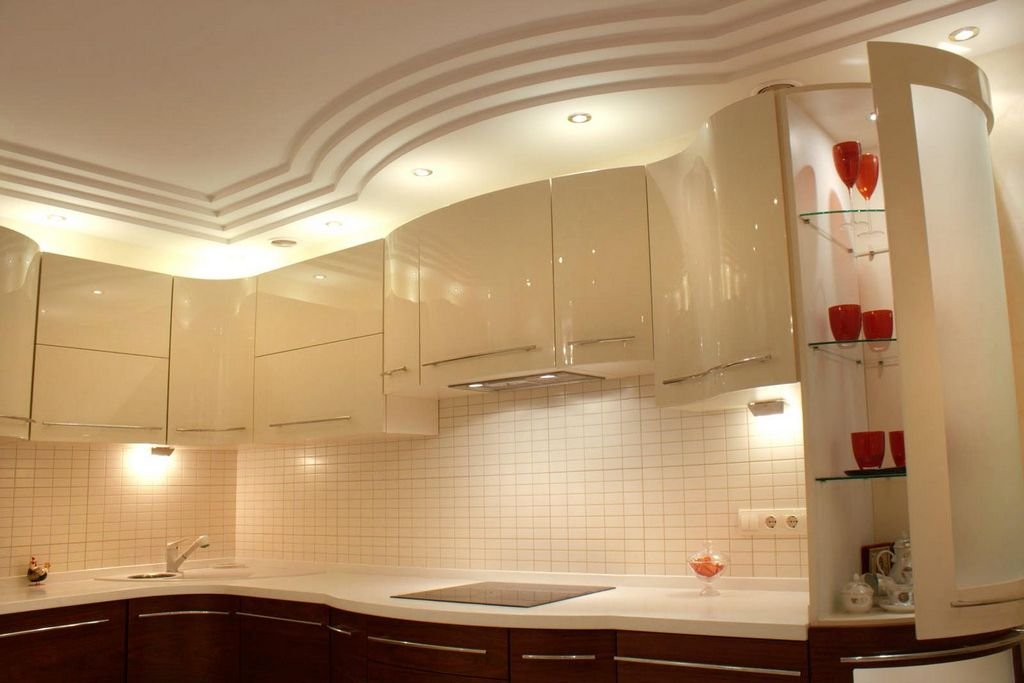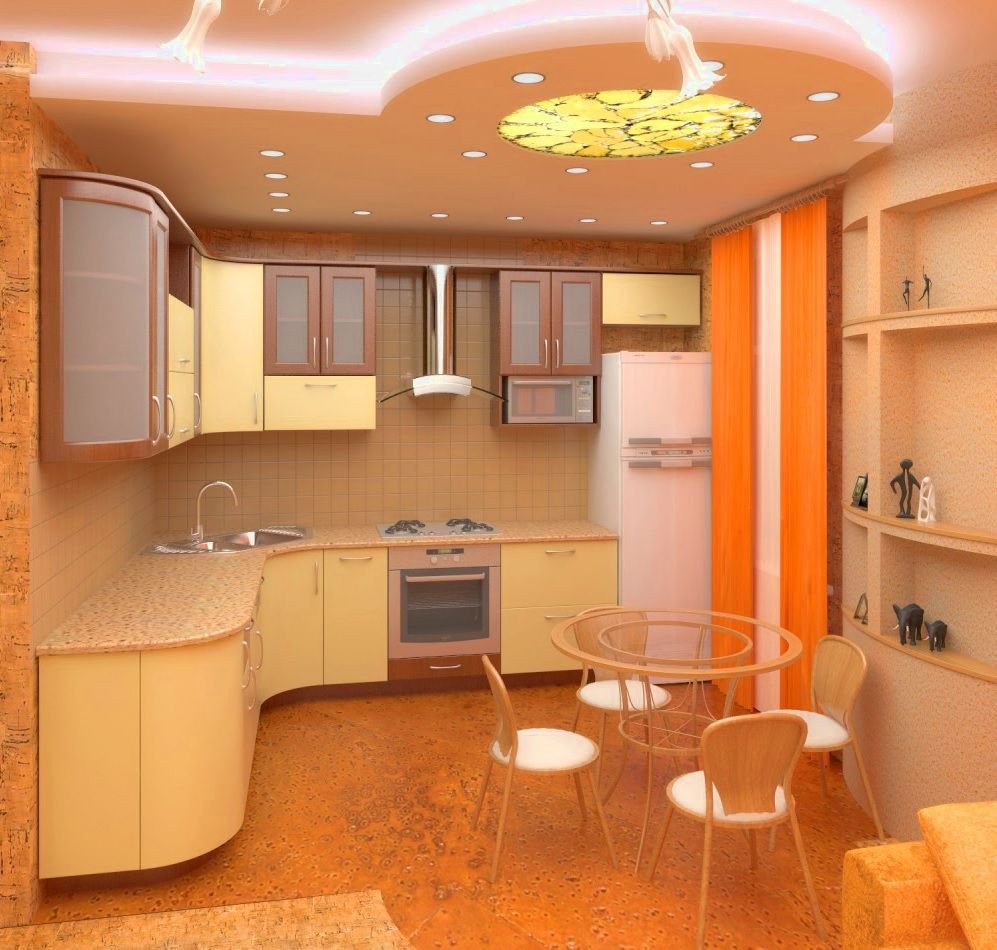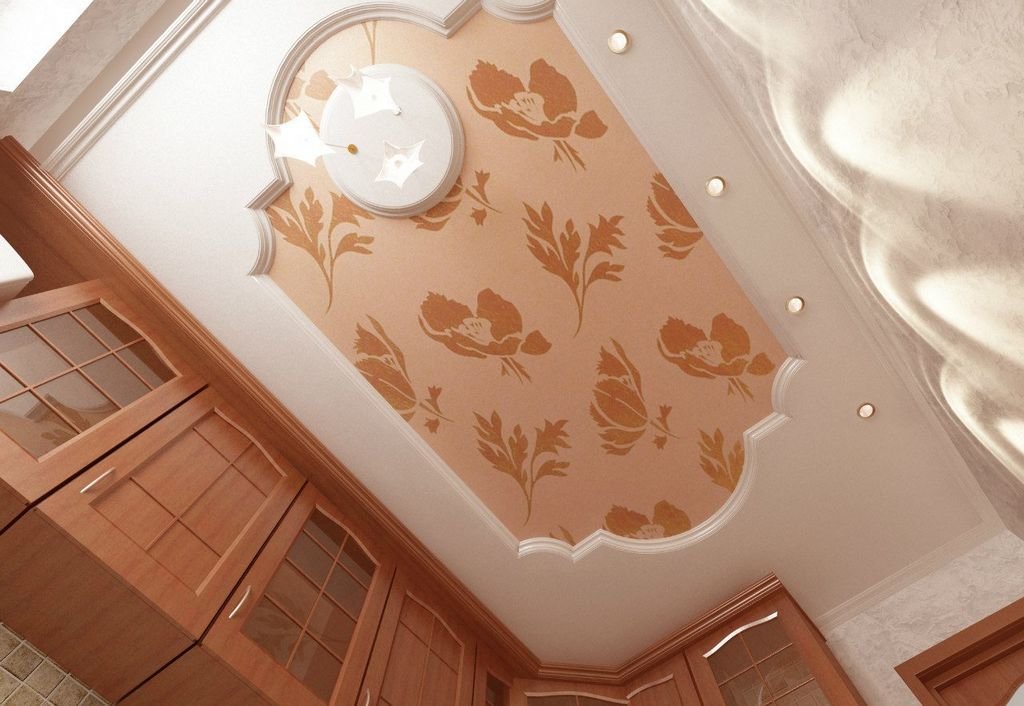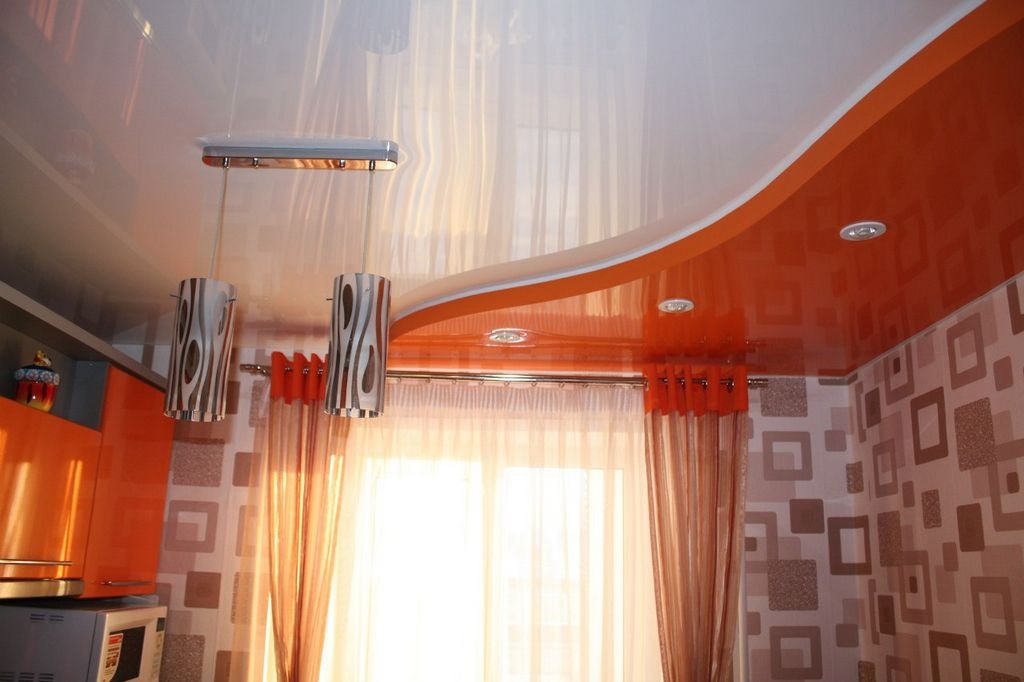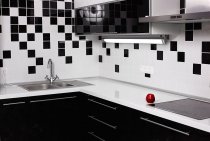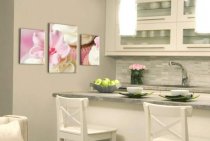Ceilings in the kitchen require special attention, since high humidity, grease and soot create extreme operating conditions that not every finishing material can withstand. In order for the ceiling not to lose its original appeal and the kitchen to remain cozy and beautiful for as long as possible, you need to choose the right type of finish. An overview of popular materials and ceiling design options will help you decide which ceiling is best for your kitchen.
plastered ceiling
The classic option for decorating ceilings in the kitchen is their plastering, followed by puttying and whitewashing or painting. If, after careful leveling with plaster and putty mixtures, the ceiling in the kitchen is whitewashed, it will not be possible to clean it of grease and soot. Regular whitewashing over time will lead to the formation of ugly sagging, to eliminate which you will have to remove the coating along with the plaster.
If you decide to stick with the classics, we recommend choosing a more modern and practical topcoat - paint based on silicone or acrylic. Such a coating will allow you to wash kitchen ceilings an unlimited number of times.
Tip: if yellow spots appear, the coating can be refreshed with the previously used water-based composition, without forgetting to pre-prime the yellowed areas with alkyd matte paint. The primer will prevent stains from showing through the finish coat.
Pros:
- low cost of materials;
- environmental friendliness;
- incombustibility;
- resistance to changes in humidity and temperature;
- ceiling height is not reduced.
Minuses:
- large time costs;
- high complexity of finishing works;
- lack of protection against flooding.
Tip: if you are going to plaster the ceiling in the kitchen in a new building, use sickle and fiberglass. This will help prevent cracks in the kitchen ceilings as the building shrinks.
Wallpapering the ceiling
If you wallpaper a plastered ceiling in the kitchen, you will get a completely different result. For the kitchen, it is best to choose washable vinyl wallpaper or paintable wallpaper. They have sufficient resistance to moisture and dirt, in addition, they can be repainted several times.
Pros of vinyl wallpaper:
- a wide selection of colors and design options;
- lower surface requirements compared to paint;
- the possibility of hiding microcracks on the plaster resulting from shrinkage;
- admissibility of humidity cleaning.
Minuses:
- under the influence of steam and hot air, heavy wallpaper begins to peel off from the surface after a while;
- even the most moisture-resistant wallpaper will not withstand leakage from neighbors from above.
PVC panel ceilings
The second budget option for kitchen ceilings is plastic paneling. Unlike plaster, this design method is simpler when performed independently. Plastic panels have all the characteristics necessary to withstand difficult operating conditions.
Advantages of a plastic kitchen ceiling:
- low cost;
- ease of installation;
- ease of washing and cleaning;
- neat appearance;
- a wide selection of textures and colors;
- moisture resistance;
- soundproofing properties;
- good protection against leaks;
- undemanding to the surface of the base ceiling;
- the possibility of hiding communications and mounting recessed fixtures.
Minuses:
- lowering the ceiling height by 5–15 cm;
- plastic is not suitable for creating an elite kitchen design.
Tip: soot and dust accumulate in the seams between the panels, so when decorating the ceiling for the kitchen, it is better to prefer seamless patterns. Glossy panels are better than matte ones as they tend to get less dirty.
Styrofoam Ceiling Tiles
Foam tiles allow you to update the ceiling in the kitchen with minimal cash costs and as soon as possible.
Advantages of adhesive ceiling for the kitchen:
- budget finishing;
- low requirements for the quality of leveling the ceiling surface;
- exceptional ease of installation;
- preparation and gluing take little time;
- moisture resistance;
- washable.
Minuses:
- the white color of the tile can quickly turn yellow;
- decorative tiles with a relief pattern will collect soot and grease in the recesses of the relief, which will be very difficult to clean
- limited design options.
Plasterboard ceiling
What can be used to make a false ceiling for the kitchen, masking all communications - from wires to the ventilation pipe? Of course, from drywall. In terms of design, drywall is a material of a higher level, since it allows you to realize any ideas. Spectacular multi-level structures can transform a standard room, give it a touch of individuality.
Pros:
- an easy way to level the ceiling surface;
- no need to remove the old finish;
- the ability to use lamps of any type;
- availability of do-it-yourself installation;
- the plasticity of the material allows you to create structures of any shape, multi-level ceilings for a modern kitchen;
- Variety of finishing and decoration options.
Minuses:
- a significant reduction in the height of the walls;
- inability to retain water, in case of leakage, a complete replacement of the material will be required;
- susceptibility to deformation and cracking.
Tip: for painting the ceiling for a plasterboard kitchen, it is advisable to use not the usual water-based, but acrylic paint. The surface painted with such a composition can be washed with detergents.
Stretch ceiling
For the installation of stretch ceilings for the kitchen, a special PVC film is used. A variety of textures allows you to choose the right material for any style of interior design.
Pros:
- installation speed;
- the base ceiling surface does not need to be processed;
- moisture resistance;
- masking wiring, ventilation;
- the possibility of using spotlights;
- practicality - can be washed with soapy water;
- effective protection against leaks - the ability to hold large volumes of water;
- large selection of textures and colors.
Minuses:
- self-assembly is not possible;
- instability to mechanical damage;
- reducing the height of the walls.
Each of the listed materials for the ceiling in the kitchen has its own advantages and disadvantages. The choice of finish will depend on the design of your kitchen, as well as your financial capabilities and experience in the renovation industry.
